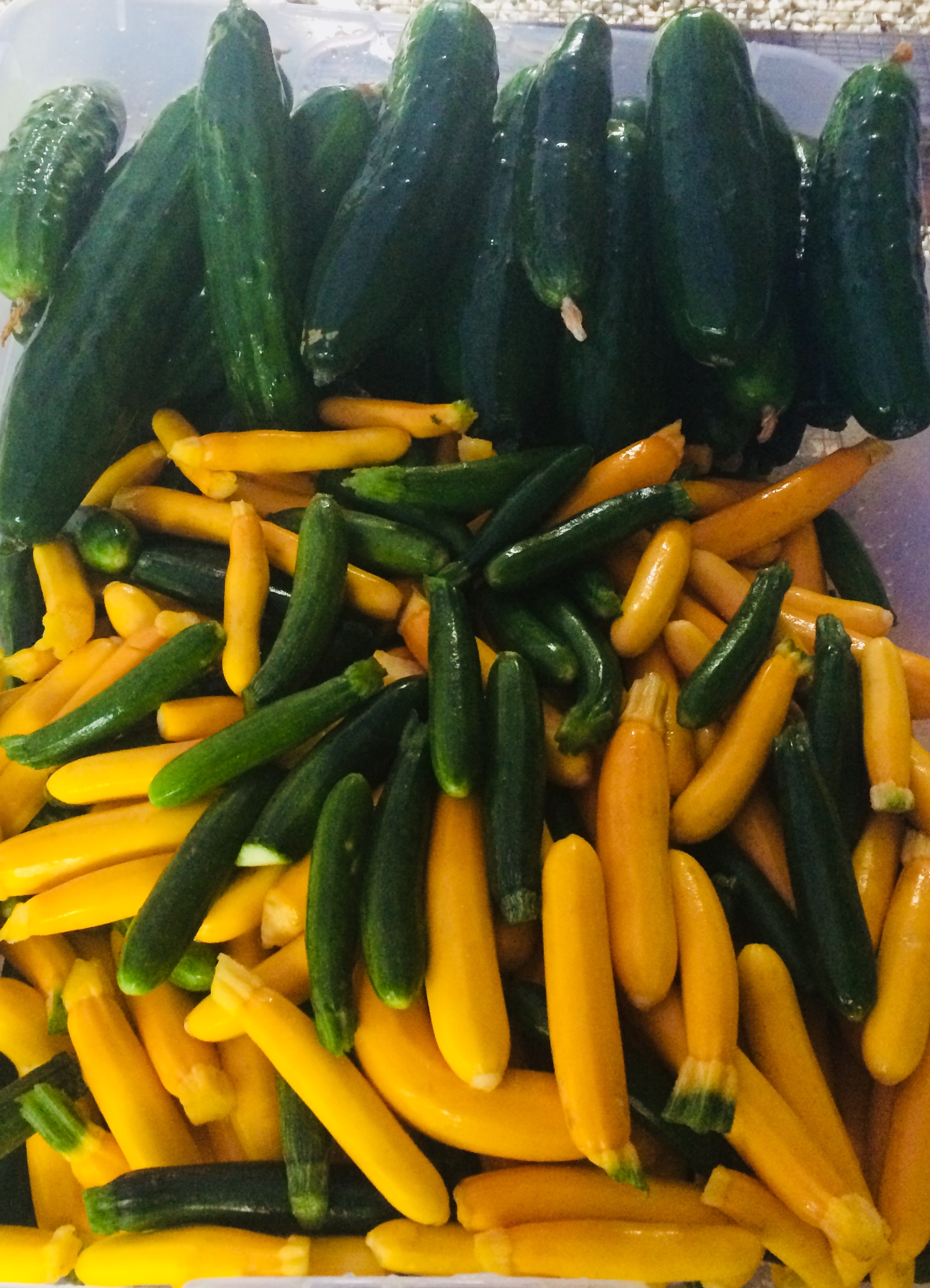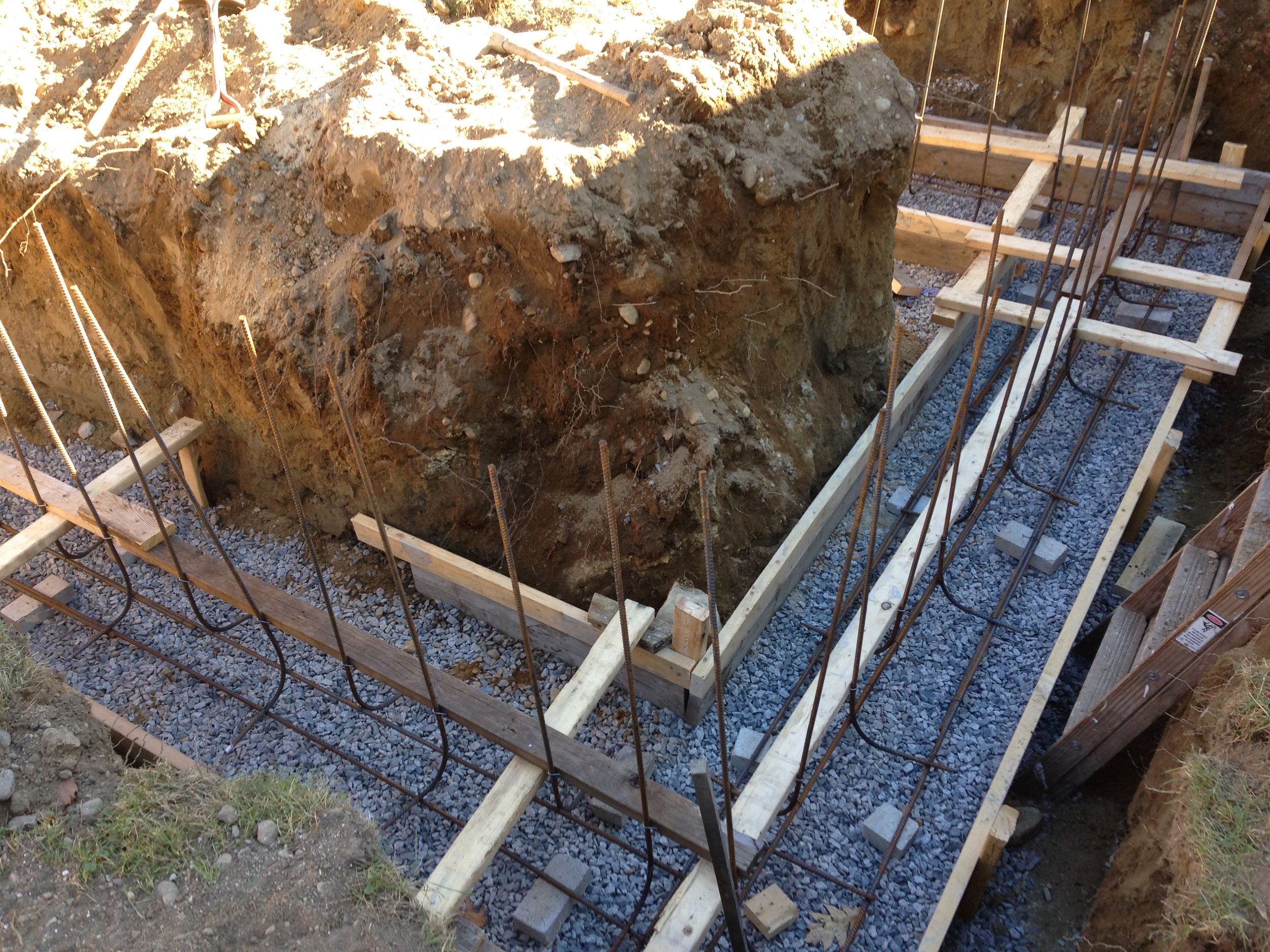C.S.A. Week 5
/Its a week of transition here at Hosac Farm. Spring and early summer crops are out, fall and winter storage crops are in, or going very in soon. We did a major rock pickup these last few days, loading the wheelbarrow many times over and dumping them on our existing stone walls down by the pond. The garden looks temporarily rock free, a fleeting pleasure, as more will be thrown up by the tiller again in the spring. We are trying to get to a point where we feel momentarily caught up with garden work to do some accessory projects around the property.
In this weeks share:
- Green Peppers
- Green Beans
- Tomatoes
- Kohlrabi
- Swiss Chard
- Summer Squash/Zucchini
- Cilantro
- Still baby Carrots
Lemon Garlic Swiss Chard
- 1 tablespoon extra-virgin olive oil
- 1 tablespoon minced garlic
- 12 cups Swiss chard, chopped (about 10 ounces)
- 2 tablespoons water
- 1 1/2 teaspoons fresh lemon juice
- 1/8 teaspoon freshly ground black pepper
- 4 teaspoons shaved fresh Parmesan cheese
Heat a large skillet over medium-high heat. Add oil to pan; swirl to coat. Add garlic; sauté 2 minutes or until garlic begins to brown. Add Swiss chard and 2 tablespoons water to pan; cook 3 minutes or until chard wilts. Stir in lemon juice and pepper. Sprinkle with cheese. Add pine nuts and/or raisins to your liking. Goes well with Scallops or seared Salmon.
Baked Summer Squash/Zucchini
- 2 pounds summer squash (zucchini, pattypan squash, yellow crookneck squash)
- 1/4 cup olive oil
- 1/2 cup grated Parmesan cheese
- 1/3 cup bread crumbs
- 1/2 teaspoon flaked salt
- 1/4 teaspoon freshly ground pepper
Preheat the oven to 350°F. Remove the stem ends and slice the squash cross-wise in 1/4-inch-thick rounds. Toss with the olive oil.
In a small bowl, combine the bread crumbs, Parmesan, salt, and pepper. Arrange the squash rounds in a 9x12-inch rectangular baking dish, or 10-inch pie plate. Sprinkle the bread crumb mixture over.
Cover the baking dish with foil and bake in the oven for 30 minutes. Remove foil and bake another five minutes until the top is bubbling and crispy.
![IMG_5451[1].JPG](https://images.squarespace-cdn.com/content/v1/56d499d28259b57a201ef2af/1604959631417-QG2SU3O3RCG10VZSEYHC/IMG_5451%5B1%5D.JPG)



















![IMG_2495[1].JPG](https://images.squarespace-cdn.com/content/v1/56d499d28259b57a201ef2af/1522357151269-HNV2QRUQMK6INQCYA56D/IMG_2495%5B1%5D.JPG)


